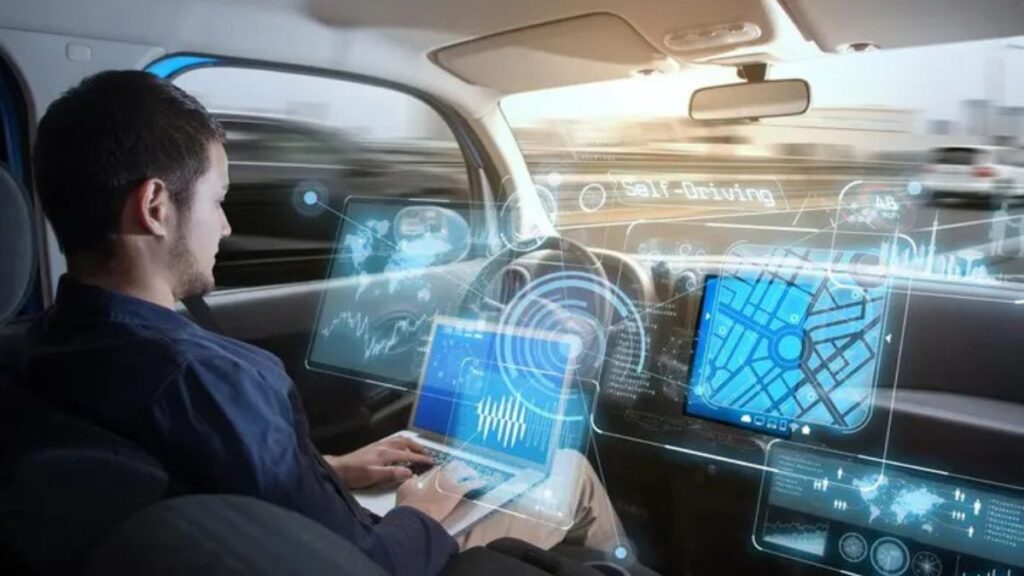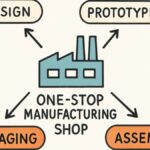Why Automotive Electronics Are Changing Fast
The past decade has brought sweeping changes to the automotive landscape, with electronics now deeply embedded in nearly every vehicle design and operational aspect. No longer limited to convenience features, innovative technologies power everything from how vehicles move to how passengers experience the ride. New advances in miniaturized sensors, adaptive software, and robust semiconductors have set the groundwork for cars that can learn, adapt, and respond to their environments. These changes are even more pronounced within new-energy vehicles, especially for EVs, emphasizing the move from mechanical to digital dominance.
The evidence is in the data: industry analysts estimate that by 2030, the electronics portion of vehicle production costs will climb to nearly 50%. As electronics become more ubiquitous, premium and mainstream vehicles benefit from features that once seemed reserved for science fiction. Rain-sensing wipers, automatic emergency braking, and AI-powered navigation are now available on various models and price points. For consumers, this translates into vehicles that are safer, smarter, and easier to customize. For manufacturers, it means adapting swiftly to market expectations and regulatory requirements around connectivity, automation, and sustainability.
Smart Safety: ADAS and Beyond
Roadway safety has always been a top priority in automotive design, but recent years have marked a leap forward thanks to the proliferation of advanced driver assistance systems (ADAS). Today, cars are increasingly outfitted with features like adaptive cruise control, blind spot monitoring, lane keeping assistance, and automated emergency braking. These systems deploy a dense network of radar, camera, lidar, and ultrasonic sensors to interpret traffic scenarios in real time, anticipating danger and helping the driver avoid it before it occurs.
The real-world effect of these safety electronics is striking: studies show that cars with AEB systems can reduce rear-end collisions by around 27%. While regulations in many regions are mandating the inclusion of these features, automakers see them as more than just compliance—they’re also a way to differentiate in an increasingly crowded market. The growing sophistication of safety tech signals a future where vehicles become proactive partners, continuously reducing accident risks through rapid, intelligent responses.
Electrification: Powering the Future
Electrification stands as one of the most transformative shifts in automotive history. As environmental concerns and regulatory initiatives push for lower emissions, electrified models are becoming mainstream. The technological backbone of this movement lies in advanced battery management systems (BMS), DC-AC inverters, and high-performance electric motor controllers. These electronics maintain powerful battery packs’ performance, longevity, and safety, ensuring that vehicles remain reliable over tens of thousands of miles.
In 2023 alone, global electric vehicle sales approached the 10 million mark—an indicator of changing buyer priorities and rapid technological adoption. The performance and efficiency of these vehicles depend on a seamless interaction of battery electronics and software that regulates charging, heat generation, and energy recovery during braking. Reliable electronics protect the car from thermal runaway and voltage imbalance and support rapid charging and longer range, rapidly becoming standard features.
In-Vehicle Connectivity and User Experience
Drivers today want more than just transportation—they want a connected digital extension of their lives while on the move. Modern vehicles provide comprehensive connectivity by integrating smartphone mirroring via Apple CarPlay and Android Auto, high-speed Wi-Fi hotspots, and AI-powered voice controls. These features ensure that drivers can access information, entertainment, and productivity tools without distraction from the road.
Beyond convenience, in-vehicle connectivity supports real-time navigation updates, automatic software upgrades, and advanced diagnostics. Over-the-air updates allow automakers to add entirely new features or improve vehicle performance over time, mirroring the fast-evolving nature of consumer technology. This has profound implications: vehicles remain current longer, and drivers benefit from instant access to the latest innovations. Of course, as cars become increasingly digital, new priorities arise around cybersecurity and data privacy, making robust security just as critical as seamless connectivity.
Artificial Intelligence and Data-Driven Improvements
Artificial intelligence (AI) has rapidly become a game-changer for automakers and drivers. Vehicles now use AI for everything from voice recognition and adaptive cruise control to predictive maintenance alerts that help drivers avoid costly breakdowns. AI-driven analytics assess vehicle conditions, monitor usage patterns, and even detect changes in driver behavior, alerting drivers to potential issues before they escalate into more serious problems.
Data-driven systems improve day-to-day operations and inform manufacturers as they iterate new models. Engineers can now draw on anonymized driving data—sometimes billions of miles’ worth—to improve safety systems, fine-tune user interfaces, and optimize drivetrain performance. For fleet operators, these insights translate into reduced downtime, lower maintenance costs, and more efficient vehicle utilization.
Sustainable Manufacturing and Eco-Friendly Design
Sustainability is reshaping automotive products and their production. Responsible automakers increasingly rely on recycled plastics and metals, low-impact production techniques, and renewable energy to construct vehicle electronics. The move toward sustainability extends to the entire supply chain, demanding that suppliers align with eco-friendly practices and environmental, social, and governance standards (ESG).
These strategies aren’t just about compliance—they’re about branding and alignment with the values of a new generation of consumers. For instance, many companies publicize using non-toxic battery components or recycled raw materials, distinguishing their offerings in a competitive landscape. This trend is spotlighted in the latest sustainability news, which highlights ambitious targets like carbon-neutral production by 2040 and “circular economy” approaches where old vehicles are disassembled, remanufactured, and returned into the production cycle.
Challenges: Standardization and Integration
Integrating so many new electronic systems presents real technical and strategic challenges. A vast array of platforms, communication protocols, and supplier technologies must work seamlessly together for the end user’s benefit. Even the most advanced features can fail to deliver a harmonious user experience without robust standards. Interoperability remains key—features like ADAS, infotainment, and BMS must function flawlessly together, regardless of which supplier or system they come from.
Industry coalitions and regulatory bodies are addressing these challenges by developing standardization, certification, and compatibility frameworks. These efforts reduce friction for automakers launching new models across multiple regions and help ensure long-term reliability and safety for drivers everywhere. As electronic complexity grows, attention to standardization will become more critical for the industry’s success.
What’s Next for Automotive Electronics?
The momentum behind automotive electronics shows no signs of slowing. Innovations in self-driving technologies, immersive in-cabin experiences, and electrification point to a future where the “car” as people know it may be as much a software platform as it is a physical machine. The rapid rate of change means that those who stay informed—whether they’re engineers, suppliers, or consumers—are best positioned to anticipate and benefit from industry breakthroughs.
To keep pace, keen observers turn to credible automotive industry news sources to track technology launches, regulatory updates, and global market developments. Looking ahead, future-proofing strategies require a blend of technical curiosity, flexibility to standards and platforms, and an ever-closer eye on what tomorrow’s drivers will demand. Across efficiency, sustainability, safety, and convenience, electronics are steering the automotive world into its next remarkable era.






